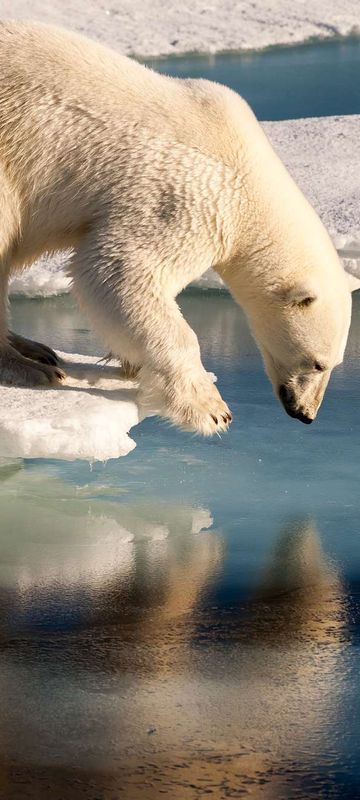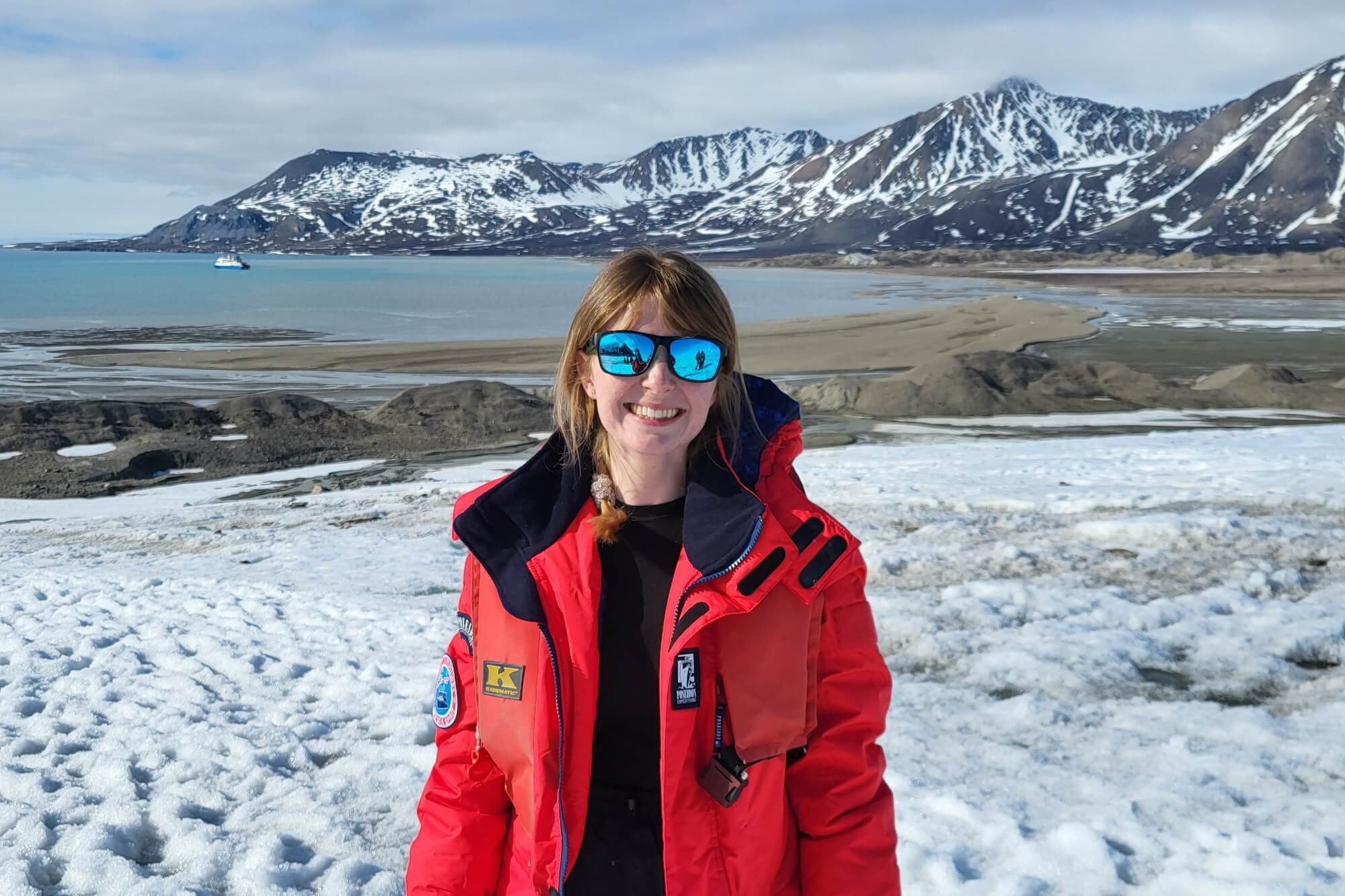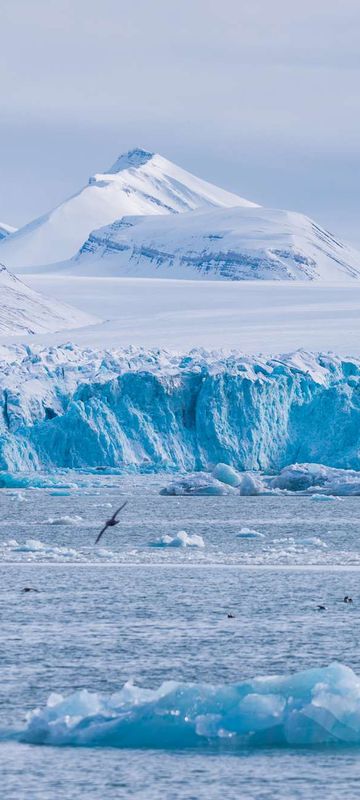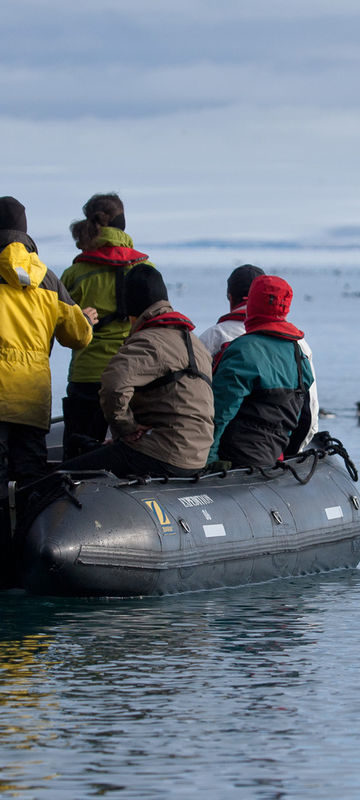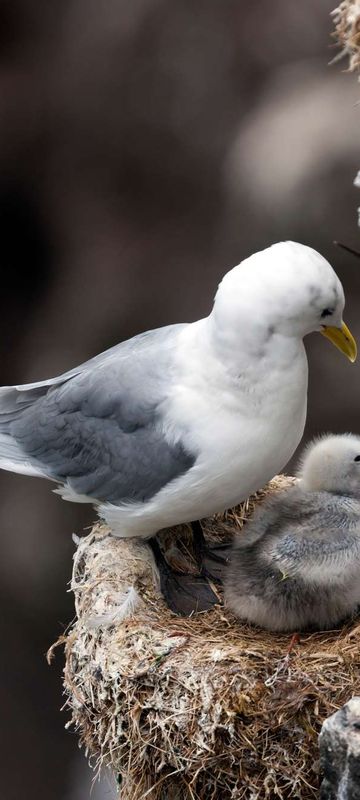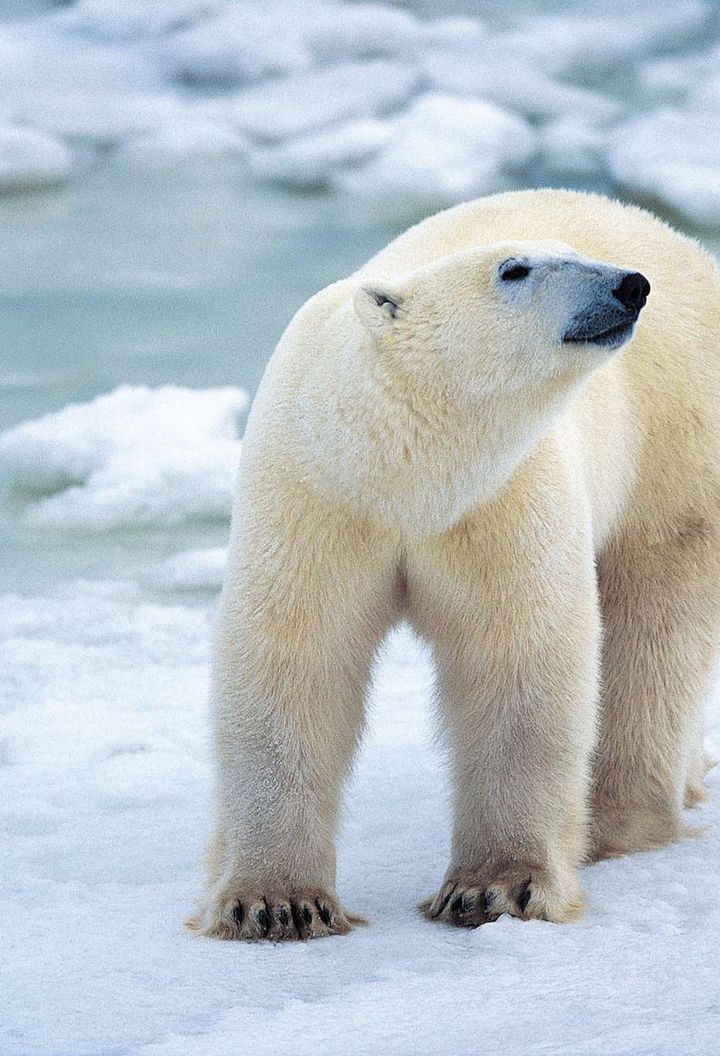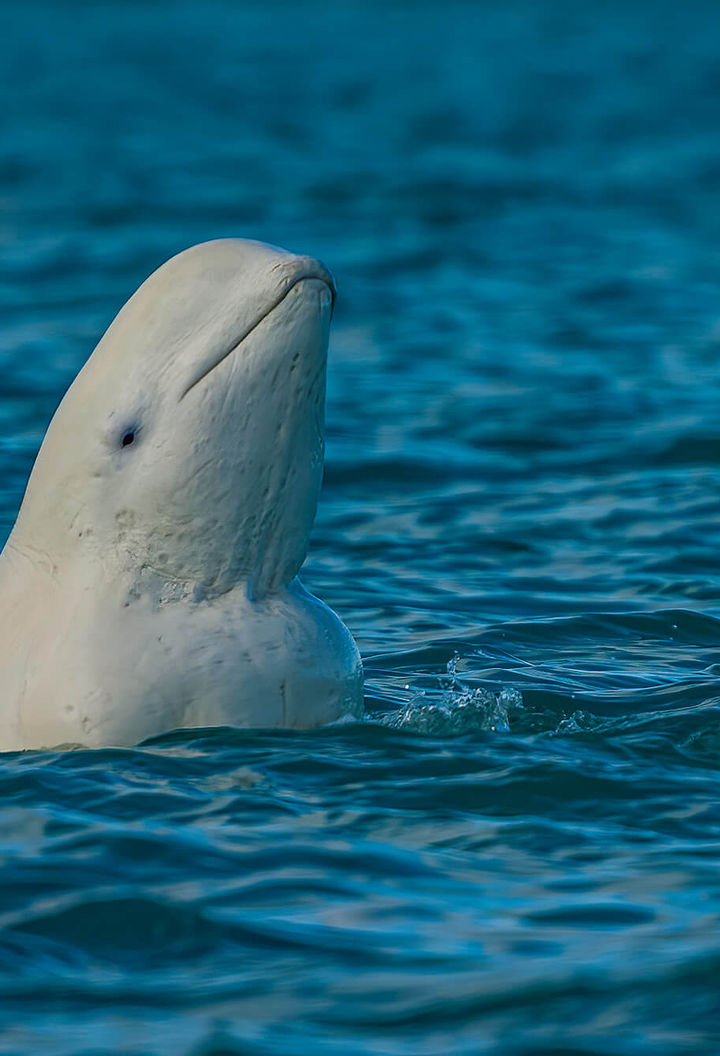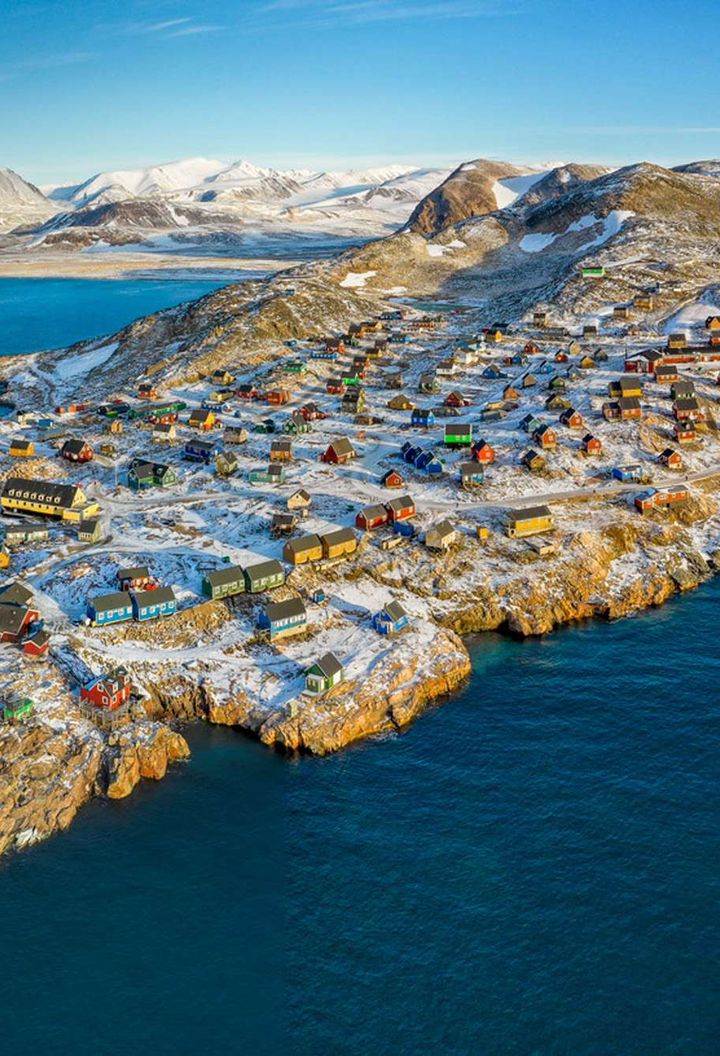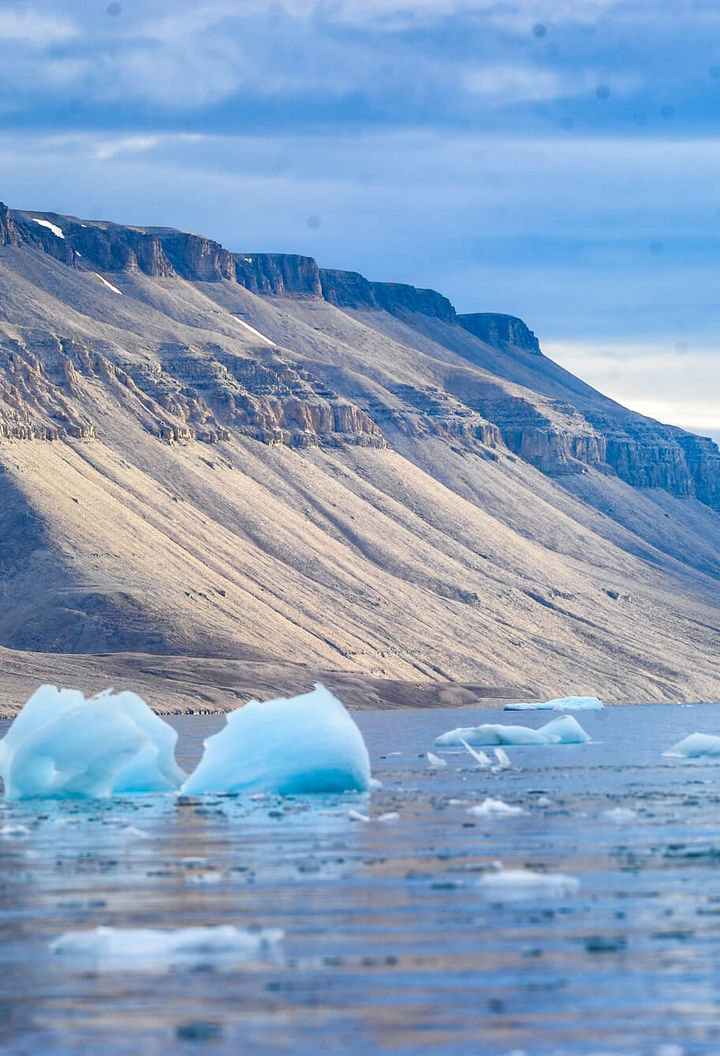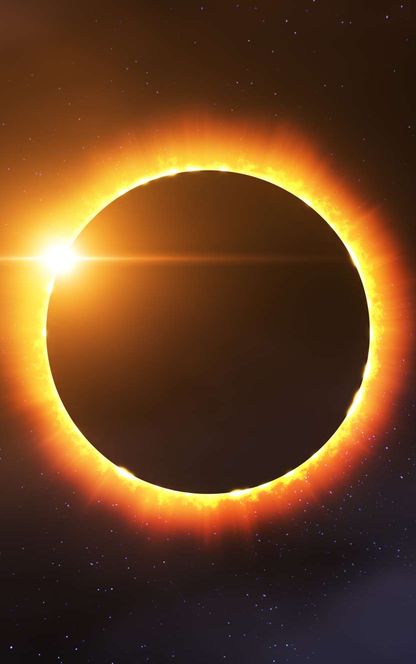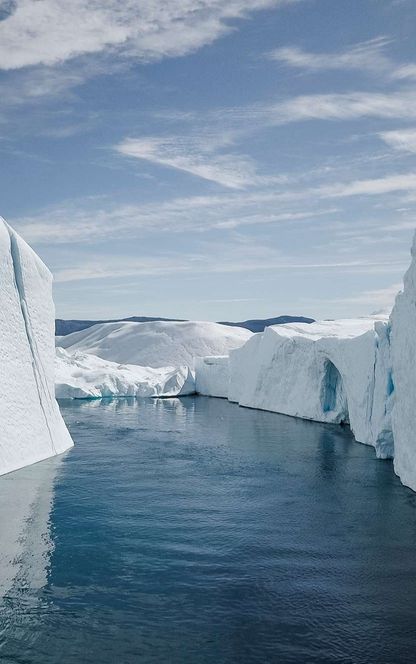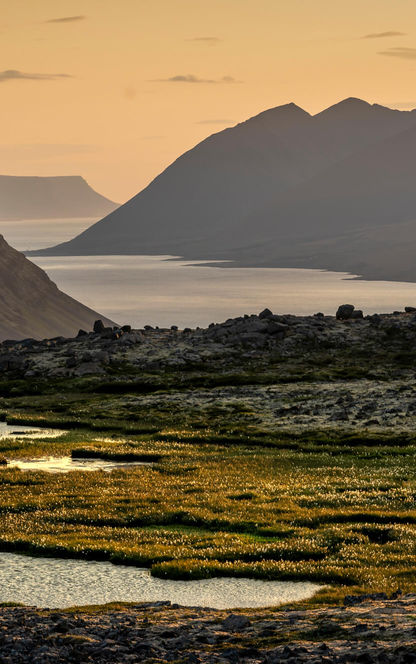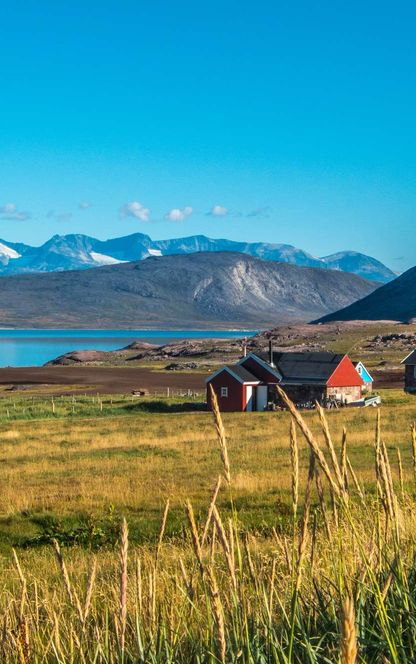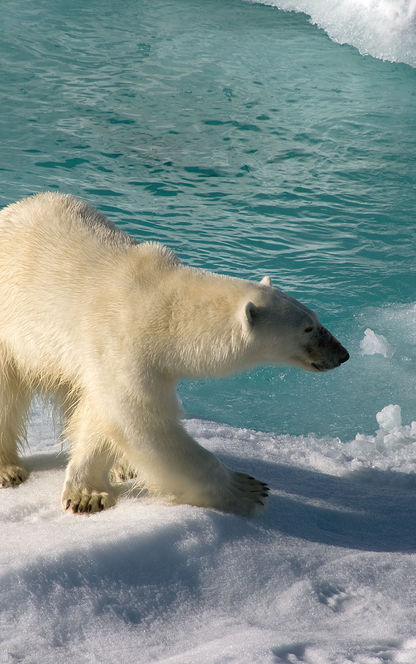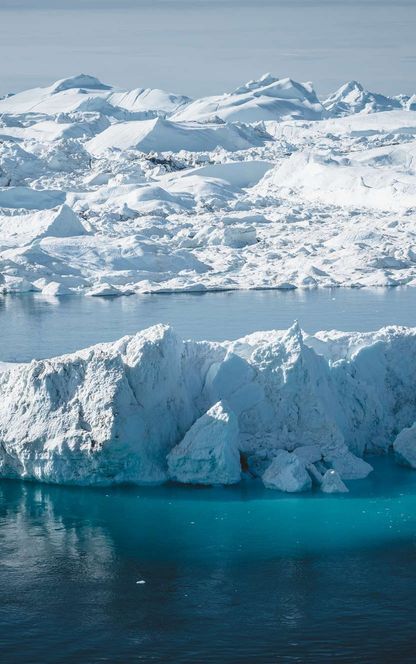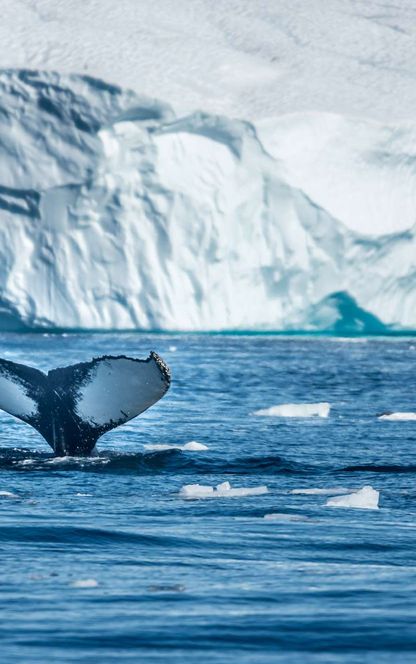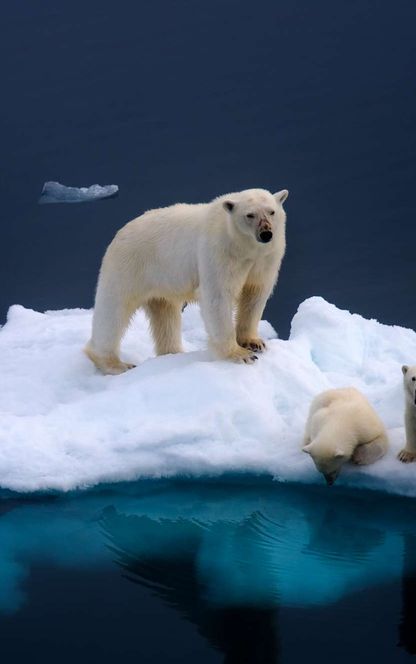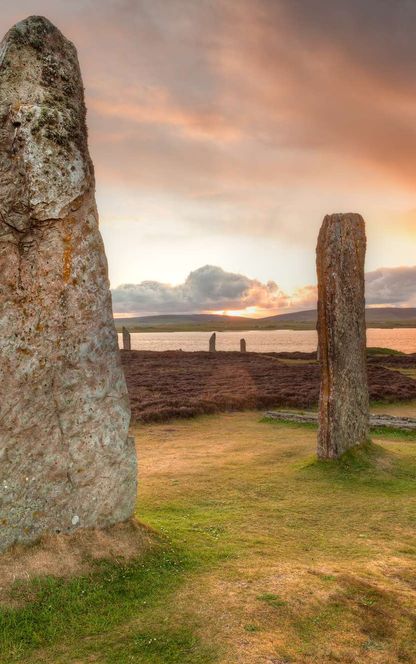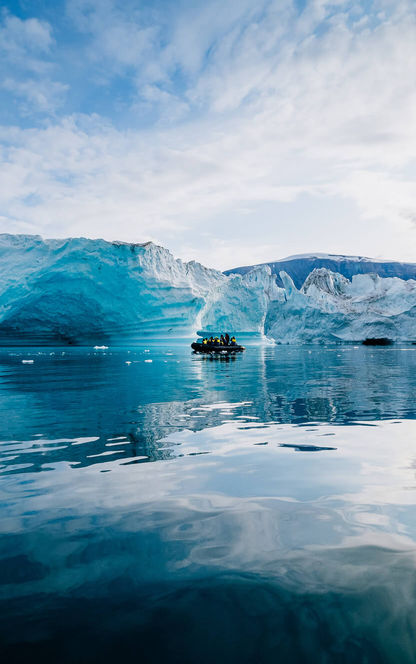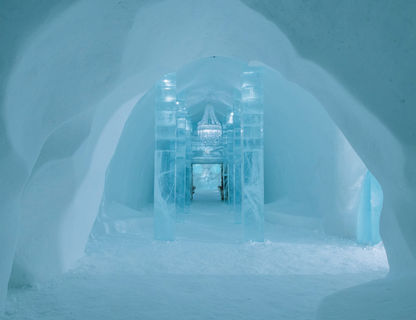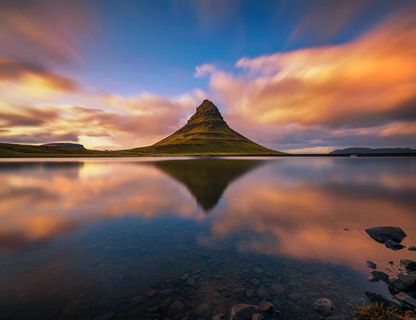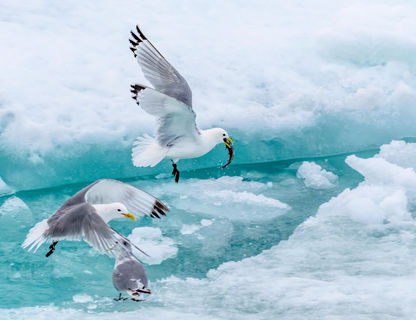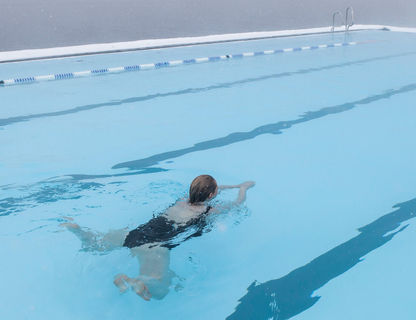Arctic in Spring
Weather permitting, you could fly to Longyearbyen in Svalbard, or one of the coastal settlements in Greenland, during early spring, but you would be restricted to a land-based trip. The fjords and bays are still choked with ice at this time, and it’s only during late spring – June – with long hours of daylight and warmer weather, that the sea ice melts sufficiently to enable polar voyages to get underway. At the start of the Arctic voyaging season, you may find that sea ice conditions still present a challenge. For example, a cruise attempting to circumnavigate Spitsbergen – the largest of Svalbard’s islands – might encounter thick pack ice in the north. All polar voyage itineraries are flexible to allow for sea ice and weather conditions, but especially so when you’re travelling early in the season.
Generally, the midnight sun can be seen from mid-June to early July at the Arctic Circle. Further north, in Svalbard and parts of Greenland, the sun doesn’t set from April to August, while the North Pole has six months of midnight sun from late March to the end of September. The summer solstice on 21 June is the peak of the midnight sun season.
























